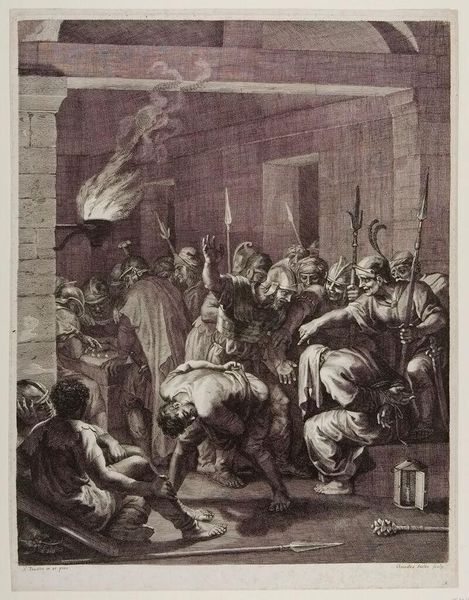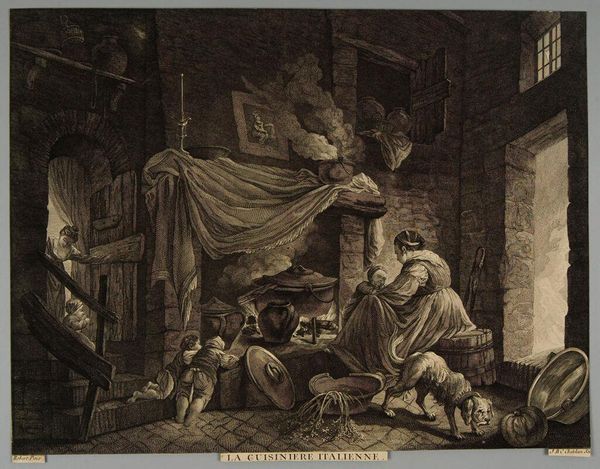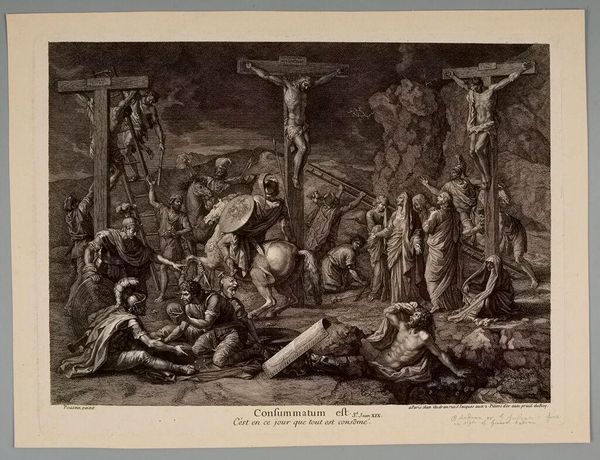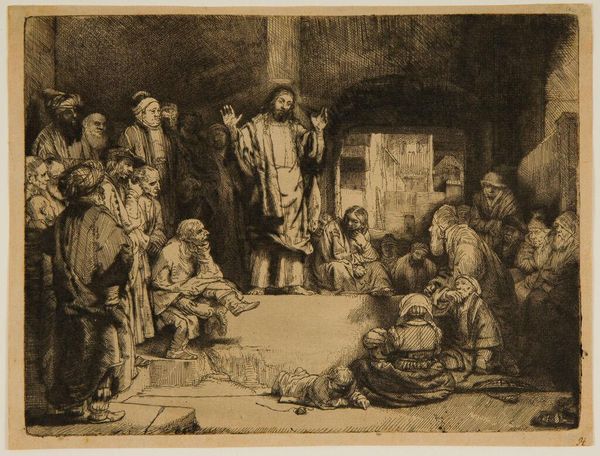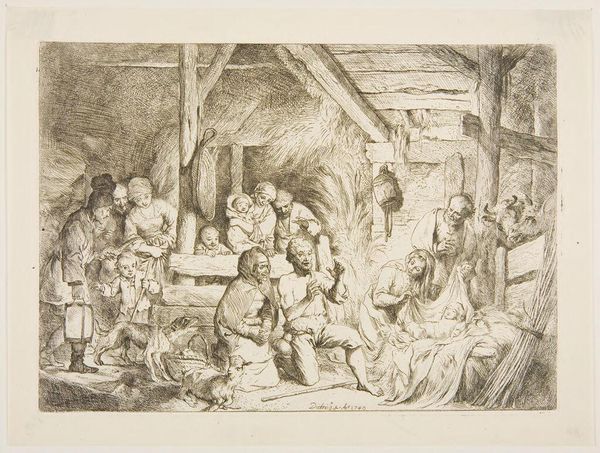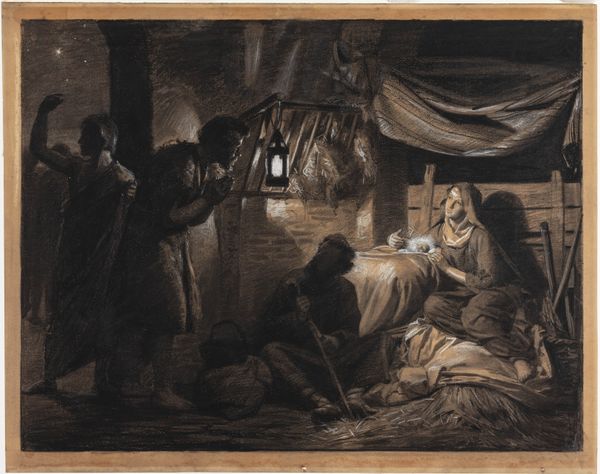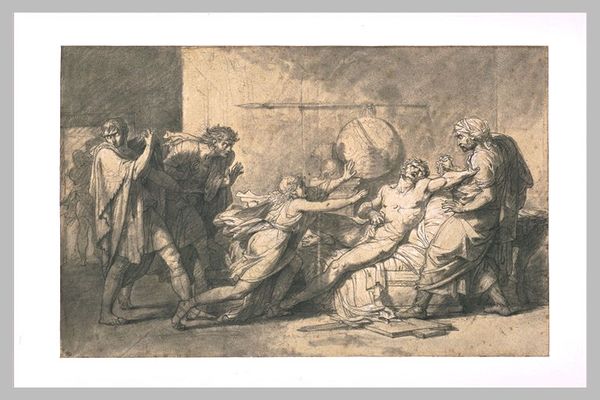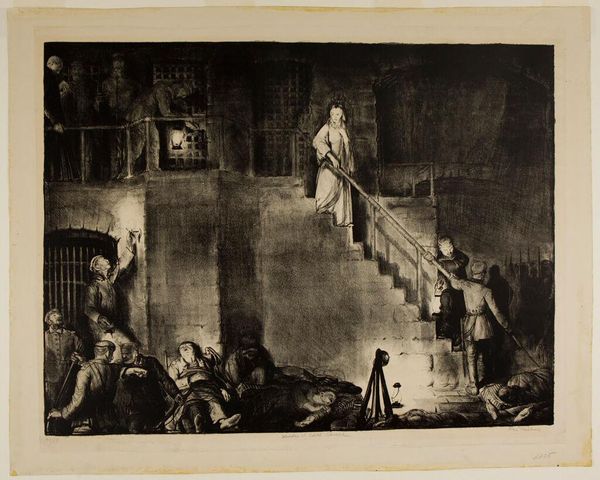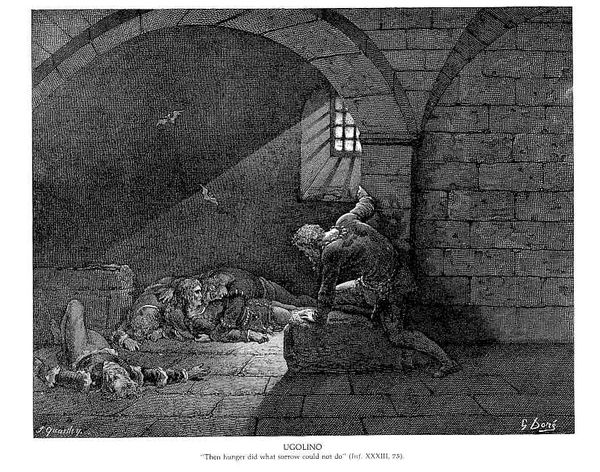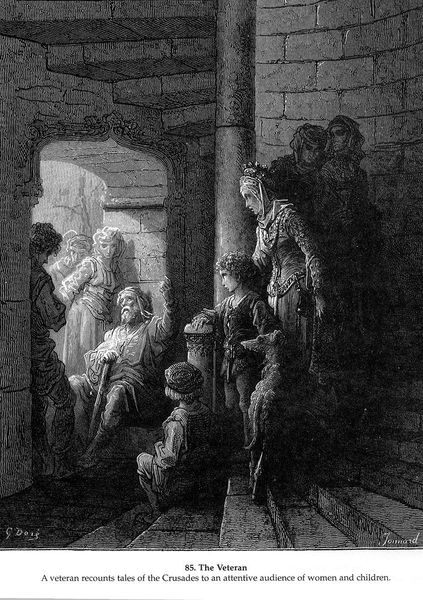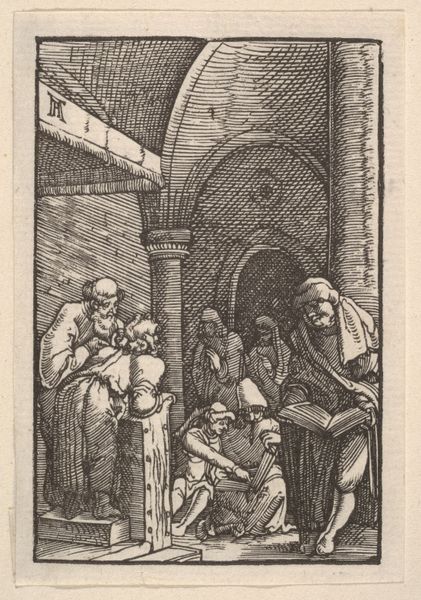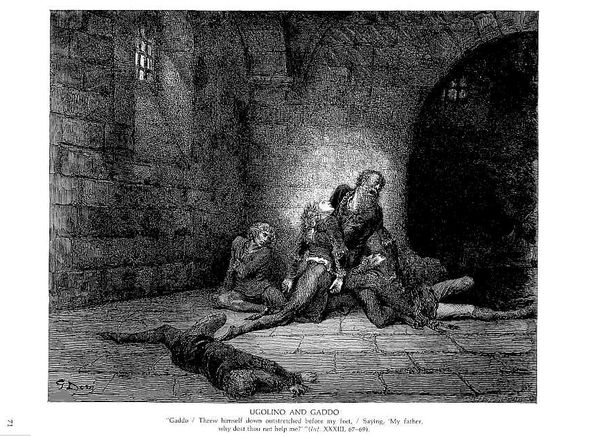
painting, watercolor
neoclacissism
narrative-art
painting
figuration
watercolor
history-painting
watercolor
Copyright: Public domain
Curator: Antoine-Jean Gros rendered this tragic scene, "The Death of Timophanes," in 1798 using watercolor. There's an immediate feeling of grim inevitability in the stark composition. Editor: Indeed. The cool washes, mostly grays and browns, enhance that sombre mood. It reminds me of an ancient frieze, even though it’s watercolor on paper. Curator: Watercolor in itself is quite interesting. Notice how Gros has skillfully layered it to achieve such depth. This material was very en vogue at this time, a material expression of neoclassical ideals, in its own way, since it's typically deployed for studies and not final, major works. And yet, consider the intense, finished quality here! Editor: Absolutely. And I think it’s clever of Gros to have used this transparent medium for such a heavy subject. Symbolically, watercolor lends a feeling of the past floating into view as in memory or legend. Take note of the distraught figure on the right. His drapery completely obscures his features which reads to me like the shrouding of memory itself. Curator: He’s certainly the emotional core of the image. But the very act of killing within an interior also brings interesting social commentary to mind. Notice the weapons brandished, the quality of the fabric used for clothing; it all suggests a specific societal standing that allowed for violence to unfold within its own set of structures. What can be owned and bartered becomes, too, that which one fights over and even kills for. Editor: Those fabrics tell a rich story. You're right to note that; their classical nature enhances the sense of morality. Gros invokes timeless themes: duty versus desire, honor versus tyranny. The shield, the robes, the statue behind—they act like loaded words within this scene. Timophanes, assassinated for his tyrannical ambitions, became a potent symbol himself of both warning and supposed triumph. Curator: Well, Gros offers up to us all these tensions present during and immediately after the French Revolution through use of watercolor on paper. He acknowledges them while allowing us to think about these systems of material good that also structure social and political standing. Editor: Exactly. It feels incredibly potent how it all accumulates into this tense drama. The somber coloring makes this ancient moment still vibrate. Curator: I’ll never see watercolor the same again! Editor: Agreed; this makes one ponder more deeply.
Comments
No comments
Be the first to comment and join the conversation on the ultimate creative platform.
